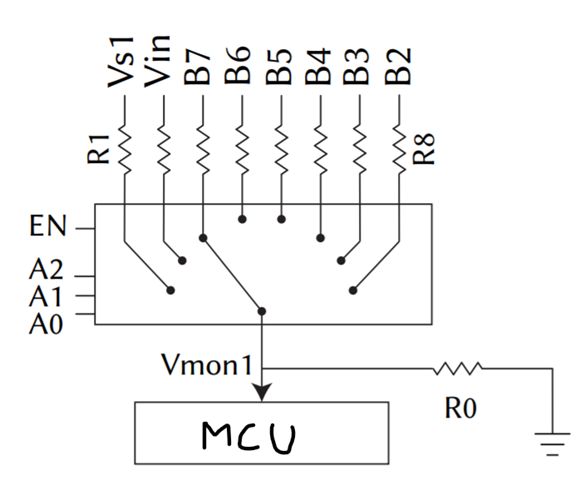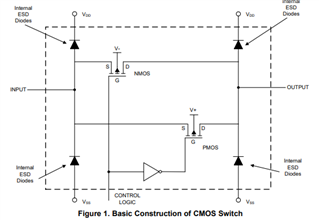Other Parts Discussed in Thread: MUX508
I have a 3.3V MCU with an ADC channel that I'd like to use to measure 8 different voltages, some of which can be as high as 28V. I have designed a simple multiplexed voltage divider circuit (see below) that takes these 8 inputs, each through their own (top) resistors, to the 8 inputs of a mux. The output of this mux is then connected through a single (bottom) resistor to ground. The output of the mux is also hooked (directly) to the ADC input on the MCU. The several resistors are chosen so that, when a particular channel is selected, the voltage at the output of the mux is always no greater than 3.2V, and the current is under 1 mA. This puts the bottom resistor at 10 kOhm, and top resistors in a range from 3.74 kOhm to 76.8 kOhm.

However, the voltage on the mux inputs on the OTHER channels (that is, those that are NOT selected, so that current is NOT flowing on those channels), will be pulled up, through the top resistors, to as high as 28V.
My question is, in this setting, can I get by with a TMUX1208 (which is small/inexpensive, but rated only to 6V) as my mux, or should I switch to something like a MUX508 (which is rated to 36V, but is much larger and more expensive)?
My hope is that the presence of the substantial resistors in the above-described scenario would protect the TMUX1208, so that even though the voltages of unselected channels are pulled well above 6V, the currents could never actually get large, so it would be ok.
How should I handle this situation?
Thanks for your guidance,
Ricardo



